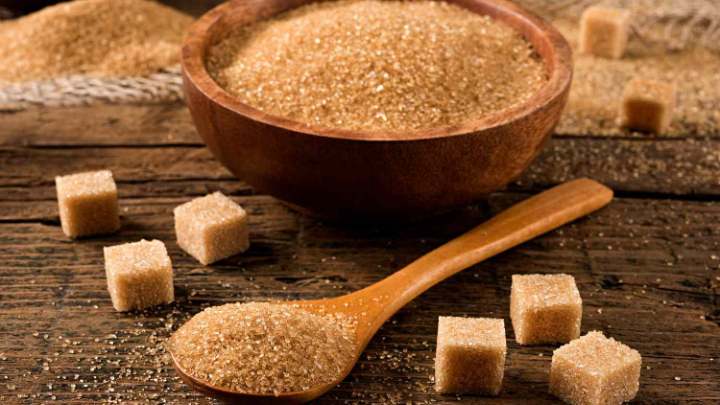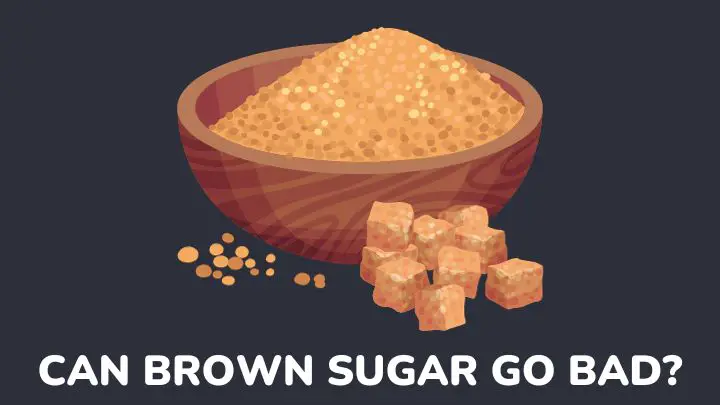There are some of those kitchen items that seem to last forever. Brown sugar is one of those. However, it does go bad.
Unlike other food items, it is not so easy to tell that this sugar has gone bad. For some reason, its brown hue, which comes from molasses, could make investigation tricky.
So, if you’ve got a box or bag of brown sugar in your kitchen or pantry and it looks off, you should read this article. You will find out how long it takes for this sugar to go bad, the signs of spoilage, proper storage techniques, and how to fix hard brown sugar.
Can brown sugar go bad?
In an actual sense, brown sugar cannot go bad. It has a high moisture content, but it is not enough to trigger spoilage. The sugar content counters the moisture level and makes it impossible for microbes to grow in it.
However, under improper storage conditions, the sugar may lose its moisture and harden. It could also make it unpalatable and difficult to use.
It should ease you to know that the deterioration you see, and think is spoilage is rather a quality thing than a cause for safety concern.
Can brown sugar go bad in the refrigerator?
You shouldn’t be storing brown sugar in the refrigerator. You should store sugar in a clean, dry environment. The air and moisture in the refrigerator will make it dry out, and become hard, and lumpy.

Can brown sugar go bad in the freezer?
Instead of the refrigerator, store your box of sugar in the freezer. The air in the freezer is drier and will retain the quality of the sugar when you are ready to use it. It may have frozen into a big lump, but you can work on that with a fork.
How long does it take brown sugar to go bad?
Brown sugar has a very long lifespan; it can last up to two years with proper storage. The sugar may last longer than this if you store it properly. Also, it could lose its quality before this period if you do not store it properly.
Will brown sugar go bad if it is unopened?
Unopened or opened, your sugar can last up to two years if it has been in the right storage conditions.
How do you know brown sugar has gone off?
Pest invasion
Insects, their eggs, or larvae in your box or bag of sugar are signs that you should not eat the sugar. They most likely got into the sugar because of poor storage. Also, it does not matter if you saw them dead or alive. Trash the sugar.
Mold growth
Wet spots, organic matter, or mold growth on the sugar are signs that you should trash it. Sugar naturally does not support mold growth, but if it comes in contact with water or too much air, this growth will appear.
Do not try to salvage anything because consuming mold can be dangerous.
An off smell
Brown sugar does not have a specific smell, but if it smells musty or sour, or if it has absorbed the smell of other items, it has gone off. This does not completely say that sugar is bad, but it isn’t so good either. Depending on how bad the smell is, it might be usable.
Clumpy sugar
Lumps in your sugar are not a good sight but they are not always a sign that it has gone bad. If there is no mold growth or wet spots, you can soften the lumps and use the sugar.
How to soften brown sugar that has gone hard
Use the microwave
This method is better for sugar that has hardened over a very long period, like a year. Place the hardened sugar in a microwave-safe bowl. Place a damp paper towel over the bowl and heat on medium-high for 20-30 seconds.
Reheat at 10-second intervals until you see the lumps loosen. Be careful not to heat for too long. Otherwise, the sugar will cook and melt instead.
The oven
Heating clumpy sugar at 250°F (121°C) in an oven can also soften the sugar. Heat at this temperature for a few minutes, checking on it at intervals. Poke the cake of sugar with a fork to monitor progress and prevent the sugar from melting.
Throw in some slices of apple
Apple is a moisture-rich fruit. Adding some slices of apple to the box of clumped sugar can help to soften it. How does this work? The slices of apple transfer their moisture to the dried-out sugar, softening the lumps, and restoring moisture.
You can also achieve this with slices of fresh bread. But you should replace them after a day or two after they have lost their moisture to the sugar. Leaving them in the sugar can reverse all you have done.
Additionally, this can be a preventive measure to prevent your brown sugar from drying out.
Soften lumps with terracotta
Take a clean piece of terracotta and soak it in water for 10 to 20 minutes. Afterward, place it in a box or bag of clumpy brown sugar. Seal and leave it for a day or two. During this period, the terracotta will provide enough moisture for the sugar and revive it.
How to store brown sugar
- Keep sugar in a clean, dry environment
- It is better to leave the sugar in the original packaging it came in
- Storing brown sugar in a sealed container will help to keep out moisture, insects and their larvae
- Do not store the sugar near heat sources, in environments with extreme temperatures and moisture
- Invest in a sugar saver. Sugar savers are built to regulate moisture and keep sugar from clumping
- If you use airtight containers or bags, you can drop a slice of bread or a piece of cracker in the sugar bag to keep the moisture from drying out. However, you must replace the bread or cracker every week
- Freeze sugar you don’t need for everyday use
Substitutes of brown sugar
You don’t have to give up on your recipe if your sugar is irredeemable. Here are some excellent brown sugar substitutes that are just as perfect
- Transform white granulated sugar into brown sugar. 2 teaspoons of molasses for 1 cup of white sugar
- Use more white sugar
- Liquid sweeteners like maple syrup, honey, or agave
- Maple sugar
- Coconut sugar
- Applesauce
- Date sugar
- Turbinado sugar
- Muscovado sugar
- Palm sugar
- Barley malt syrup
- Brown rice syrup
FAQs
Can you bake with brown sugar after it has expired?
If the sugar is still within two years of purchase, you can be sure it has not expired, and you can bake with it. if it has gone hard, soften it and whip it into your batter or dough.
Why does brown sugar turn white?
Yes, brown sugar can turn white when it begins to lose moisture. But this is not permanent. You can reverse this by increasing the humidity around the box or bag of sugar. This will rehydrate the sugar and restore its brown hue.
Can you turn white sugar brown?
Yes, you can turn white sugar brown by caramelizing it or adding molasses. Caramelizing makes it melt, syrupy, and brown.
Adding molasses adds the brown hue but keeps your sugar grainy, perfect for baking, pies, puddings, and any other recipe that requires brown sugar.
Conclusion
If your problem was the hardness of your sugar, you can see now that it isn’t a big deal after all. With any of the methods listed above, you can revive your sugar and use it in your baked goods, puddings, and pies.
Most importantly, before you go about reviving hard sugar, you must be sure that it has not gone off. Check for the signs listed above. Also, prevention is much better. Store your sugar properly to have it fresh for long periods.
Here’s a reviving hack you should learn: How to soften hard cookies. You’re welcome!
Thanks for reading.

